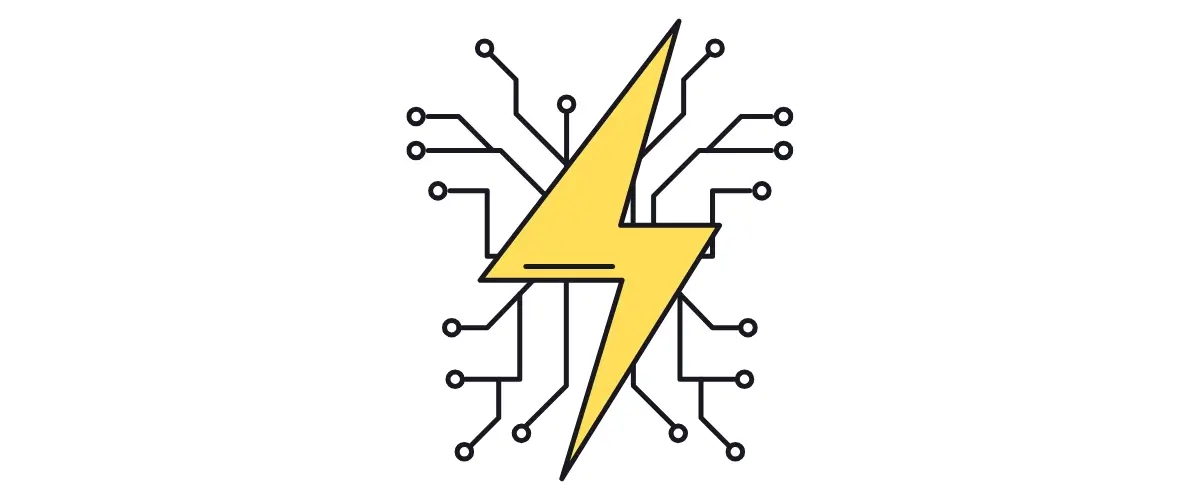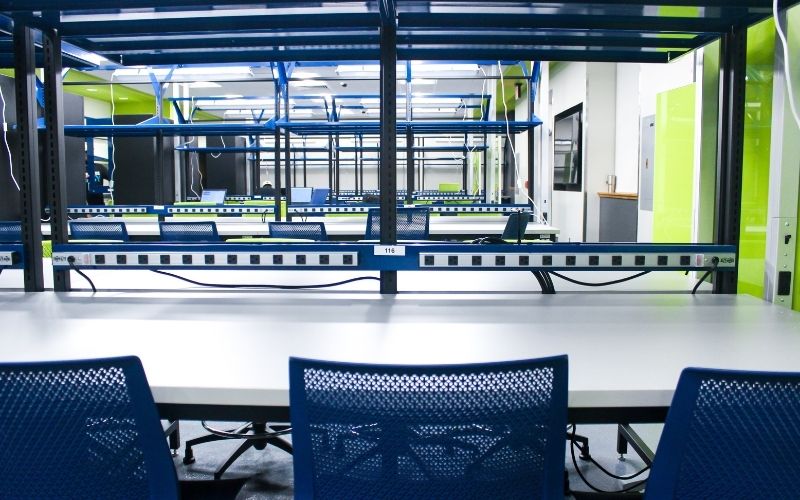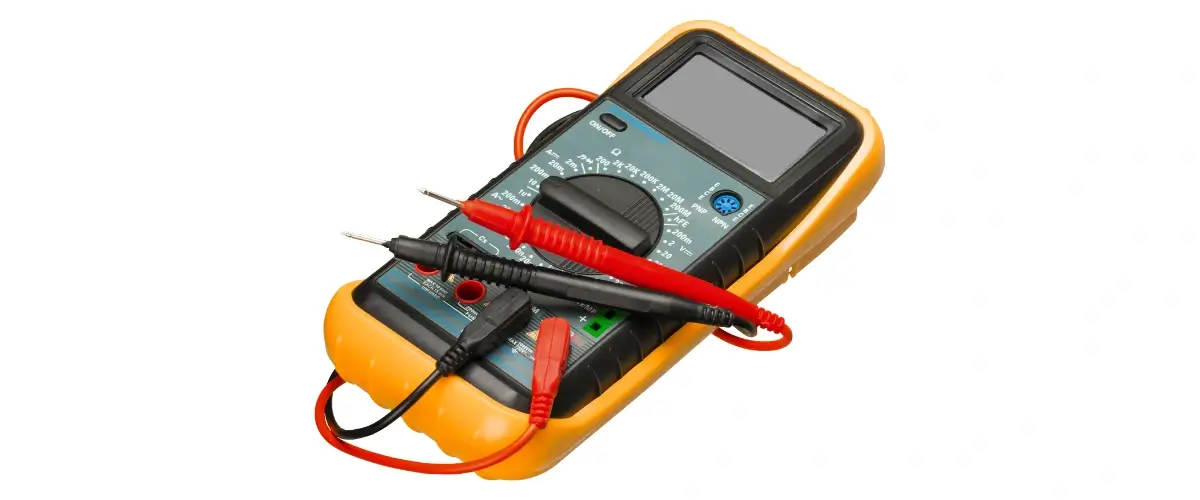

Designing an Electronics Laboratory —Spaces that handle electronics and electronic engineering require a laboratory that not only demands critical planning from layout flexibility and optimization and safety regulations but also encompasses the appropriate furniture, equipment, and more. In today’s blog, we will discuss a general walkthrough designing an electronics laboratory correctly.
Step 1: Layout, Layout, Layout
Having an optimized layout stimulates efficiency and safety. You can break down your layout into these three general sections:
- Workstation/Furniture Arrangement: Organize lab worktables to foster smooth workflow and collaboration ease.
- Clear pathways: Establish unobstructed movement to prevent accidents and improve accessibility.
- Zoning: Creating areas for specific tasks like assembly, testing, and storage to minimize cross-contamination and confusion.

Though each lab will be different, having these in mind can help with how you want to electronics laboratory to flow.
Step 2: Safety, Most Important, But Not Always Understood
Disregarding the safety of your research personnel and protecting the equipment in the lab is crucial and cannot be missed. A main priority when it comes to these environments is preventing electrostatic discharge from harming employees and circuitry. Below are some safety measures that can be implemented in the lab:
ESD Flooring: Installing ESD flooring helps prevent electrostatic discharge, protecting both personnel and equipment.
Ventilation and Fume Extraction: Proper ventilation is crucial to eliminate fumes from soldering or chemical processes. Lab snorkels (sometimes referred to as elephant trunks), are used in these kind of labs because they can capture containments that are quite close to the hose.
Emergency Protocols: Equip the lab with safety showers, eye wash stations, fire extinguishers, smoke detectors, and clearly marked exits to handle emergencies effectively.
Considering these safety options safeguards your team and equipment.
Step 3: Furniture: The Driving Force of the Lab
Selecting appropriate furniture is crucial when designing an electronics laboratory. Key considerations include:
Having ESD workbenches, which are designed to dissipate static electricity, ensures the protection of your equipment.
Ergonomic ESD Compliant Seating: Long hours in the lab necessitate comfortable seating.

Having ESD-compliant chairs not only provides comfort but also prevents static buildup, aligning with safety protocols.
Modular Storage Solutions: Mobile storage that can move and flow as the lab does while still keeping tools and components organized within arm’s reach enhances workflow and productivity.


Step 4: Essential Equipment
The equipment is most often what you would find in an electronics lab; however, it is well to keep in mind that whatever processes and testing you are looking to perform in the lab will aid in determining what equipment is necessary:
- Multimeters: For measuring voltage, current, and resistance.
- Oscilloscopes: To observe varying signal voltages.
- DC Power Supplies: Provide stable power sources for testing circuits.
- Function Generators: For testing and debugging circuits by generating different types of electrical waveforms.
- Soldering Stations: Essential for assembling and repairing electronic components.
Procuring high-quality equipment ensures accuracy and reliability in your experiments and projects.
Fine Tuning Your Lab: Other Things to Consider
Though we have covered the overall important and basic elements of how to design an electronics lab, other factors often get missed that you need to factor into the space:
- Lighting: Having adequate and adjustable LED lighting reduces eye strain and improves precision in tasks.
- Noise Control: Implementing sound-dampening materials can create a more comfortable working environment.
- Flexibility: Designing flexible spaces allows for easy adaptation to evolving technological needs. Modern labs for various industries are designing their spaces to incorporate flexibility to keep up with new research and technological advances. Being stuck in a confined space that isn’t optimized for flexibility can cost a lab tremendously.
These important factors, though sometimes not always remembered, contribute to a sustainable and adaptable lab environment.
ready to Design your electronics laboratory?
At OnePointe Solutions, we can provide interior design assistance with your electronics laboratory, along with furnishing as well. From tailor-made ESD workbenches with grounding and ESD mat accessories to quality anti-static chairs, partner with us to create a lab that is not only functional but also a safe and efficient space for innovation. Give us a call at (866) 612-7312 to speak to a representative today!


